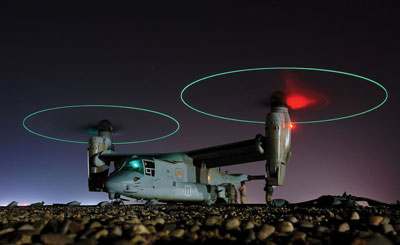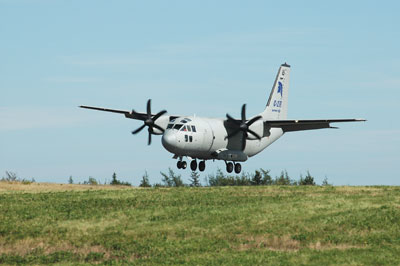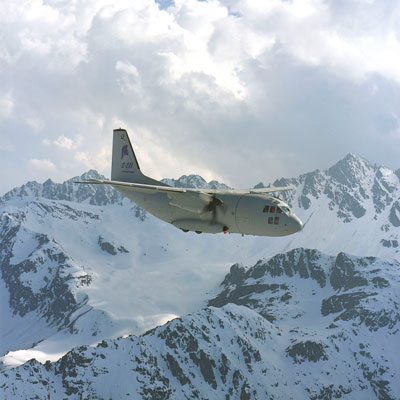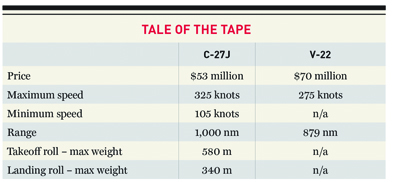
Features
Operations
Evaluating FWSAR hopefuls
The need to replace Canada’s fixed-wing search and rescue aircraft (FWSAR) was identified by the Chretien government more than a decade ago
March 6, 2013 By Paul Dixon
The need to replace Canada’s fixed-wing search and rescue aircraft (FWSAR) was identified by the Chretien government more than a decade ago. It was trumpeted as a priority at the time but has been floundering ever since for a number of reasons.
While Canada’s commitment to the mission in Afghanistan and the urgent purchases that mission entailed pushed the FSWAR replacement project far down the page, it was an apparent miscalculation by military planners in trying to present the next-generation FSWAR aircraft as a fait accompli that caused the process to slam to a halt.
Urgent material requirements to support the combat mission in Afghanistan were filled by sole-source contracts. The military identified its choice for helicopters, armoured vehicles and transport aircraft and the purchases were made. These purchases, plus complaints raised in the House of Commons and by domestic aerospace firms that the Royal Canadian Air Force (RCAF) had decided on a “foreign” aircraft, were enough to stall the project.
In 2008, Defence Minister Peter MacKay tried to fast-track the project, but this was stymied again by allegations that the air force had rigged the specifications to favour one aircraft. Following in the footsteps of the F-35 purchase/non-purchase and resulting “reset” by the government, the FWSAR replacement project will head into its second decade with renewed vigour. To date, there have been at least six serious contenders identified and a couple of “maybes” noted circling out over the horizon (see the Nov/Dec 2012, Jan/Feb 2013 issues of Wings for profiles of the Next Gen Buffalo and Twin Otter, C-130 Hercules and C-295).
 |
|
| The V-22 was redesigned and re-introduced in 2001-02 and is now operational with the U.S. Marine Corps and U.S. Special Forces. PHOTO: Pte. 1st Class Benjamin Watson, USMC
|
In September of last year, Italian OEM Alenia Aermacchi touted its C-27J Spartan as being “designed, built and equipped for completely autonomous deployment in extreme conditions such as those found in Canada’s North. The aircraft operates safely from even the most remote, isolated Canadian locations.” In response to those who labeled the Spartan as “foreign,” Team Spartan now comprises Alenia Aermacchi North America, General Dynamics Canada, DRS Technologies Canada and Provincial Aerospace of St. John’s N.L.
While the RCAF has denied rigging the specifications for the FWSAR selection process to enable it to sole-source the aircraft, there are some attributes of the aircraft that would have made it particularly attractive to the RCAF. The Spartan was originally a joint venture between Alenia Aermacchi and Lockheed Martin in a project that would see Alenia’s G.222 fitted with the glass cockpit of the C-130J and a pair of Rolls-Royce AE 2100 engines and six-bladed propeller. The partnership later developed when Lockheed decided to bid its C-130J against the Spartan in the Joint Cargo Aircraft (JCA) competition for the U.S. Army and U.S. Air Force. The Spartan was the winner of that competition, but after delivering 38 aircraft, the contract was cancelled by the USAF.
Including those delivered to the U.S., the C-27J Spartan has been selected by several national air forces around the world, including Bulgaria, Greece, Italy, Lithuania, Romania, Morocco, Mexico, Slovakia and Australia.
The Provincial connection
Beginning in 1974 as a flight school with 10 employees, Provincial Aerospace has grown to more than 800 employees, with operations across a wide spectrum in 30 countries around the world including scheduled passenger service, air cargo, aircraft maintenance, air ambulance, FBO, maritime surveillance, mission systems integration, aircraft modification, training, integrated logistics support and mission operations.
 |
|
| In response to those who labelled the Spartan as “foreign,” Team Spartan now comprises Alenia Aermacchi North America, General Dynamics Canada, DRS Technologies Canada and Provincial Aerospace. PHOTO: Alenia Aermacchi
|
With its headquarters at St John’s International Airport (YYT), Provincial Aerospace has hangars at Halifax International, Goose Bay, Labrador, and Comox, B.C. Its subsidiary, Provincial Airlines, is the largest regional carrier in Eastern Canada.
Provincial Aerospace currently operates maritime surveillance aircraft for the Canadian government flying a myriad of multi-purpose missions, including fisheries surveys, ice reconnaissance and mapping, pollution detection, and sovereignty patrols, using four specially modified Beech King Air B200s. Two aircraft operate from Comox, B.C., one from St. John’s and one from Halifax. Underscoring its existing relationship with the federal government, Provincial Aerospace was awarded the contract for performing midlife structural maintenance on the Canadian Forces’ four CT-142 Dash 8 navigation trainers.
Notable contracts in recent years for Provincial have included a $120 million contract in 2006 with the Netherlands government for the design and modification of two DHC-8-100 Dash-8s into maritime patrol configuration for the Dutch Caribbean Coast Guard and the provision of reconnaissance flights for 10 years. That was followed in 2009 by a $370-million contract with the United Arab Emirates for the design, modification and integration of two Bombardier Dash-8 Q300 aircraft as well as training and integrated logistics support. The aircraft will be operated as long-range maritime patrol aircraft.
The case for the V-22 Osprey
A dark horse candidate in the FWSAR sweepstakes is the V-22 Osprey tilt-rotor aircraft. The backers of the Osprey are encouraging officials to “think outside the box” when it comes time to make a decision. Made in a 50-50 partnership by Bell Helicopter and Boeing, the Osprey, which first flew in 1989, became notorious after a series of fatal crashes, schedule delays and cost overruns. The V-22 was redesigned and re-introduced in 2001-02, and is now operational with the U.S. Marine Corps (USMC) and U.S. Special Forces.
 |
|
| The Spartan was originally a joint venture between Alenia Aermacchi of Italy and Lockheed Martin. Photo: Alenia Aermacchi
|
Bell boasts that the V-22 is “ideally suited to the SAR mission in Canada, with its vast distances and harsh environments, and could do the work of several aircraft on a typical mission.” Bell takes the position of why send multiple aircraft when one aircraft – the V-22 Osprey – is all you need. Flying as a fixed-wing aircraft from base to mission, the aircraft descends in tilt-rotor mode to make the rescue, then takes off vertically before switching back to fixed-wing configuration to return to base. In this ideal world, only one aircraft (and one crew) is required, unlike the current situation in which the initial contact is made by a fixed-wing SAR aircraft, SAR techs parachute to the scene and a helicopter must be used to extract the techs and the victim(s).
There are significant issues that would have to be put under the microscope with the V-22, not the least of them being the tremendous force of the down wash from the twin rotors. USMC aviators refer to it as the eggbeater effect. The V-22s flown by the USMC take on a wide variety of tasks, including aerial firefighting utilizing a Bambi Bucket. Initial trials with the Bambi Bucket using a standard long-line proved futile, however, as the rotor wash was so strong that the bucket was whipped around in the wake of the aircraft perpendicular to the ground. The solution was to use a 150-foot long line to minimize the eggbeater effect.
The V-22 is described as having the same rotor wash footprint as a CH-53, which is not insignificant in its own right. The major difference is that the rotors of the V-22 are turning at three times the rate of the CH-53 and it’s not just the footprint of the rotor wash, but the velocity. This would be extremely important for the many times when a helicopter can’t actually land at a site and has to employ a winch to remove victims.
The rotor wash from the V-22 is also a potential threat to other aircraft. A major hazard for Ospreys flying in formation behind others in helicopter mode is the risk of the trailing aircraft getting into the lead aircraft’s powerful rotor wash, which can knock the lift out from under one of the second V-22’s rotors and cause a sudden “roll off” that may be unrecoverable. Osprey pilots are advised to keep at least 250 feet between cockpits and avoid the 5 to 7 o’clock positions behind another V-22.
The USMC has embraced the V-22 and the aircraft satisfied its operational requirements in Afghanistan for mission availability and overall safety. One issue that arose in Afghanistan was the premature wear on critical parts that saw the per-hour operational cost of the aircraft balloon. While the aircraft may have survived the heat and dust of Afghanistan, there is the question of the Canadian winter in the high Arctic, not to mention the hostile maritime environment of a country with three coastlines.
It’s ‘go’ time
Since the Canadian Treasury Board has the money set aside, it’s time to stop cutting bait and get on with the job at hand when it comes to Canadian FWSAR. The aircraft we’ve been using have served us well and that’s an understatement. The people who fly SAR missions deserve proper support, which can only come in the form of one or more new aircraft to give them the tools to continue to get the job done as only they can do it. The V-22 Osprey or the C-27J Spartan may soon get the chance to offer that support.
 |